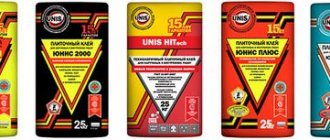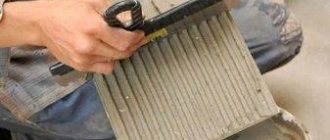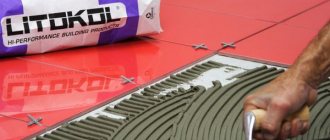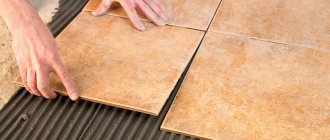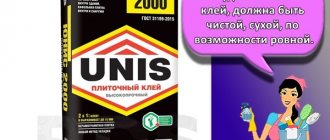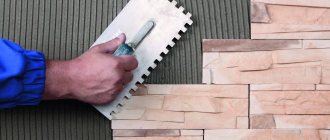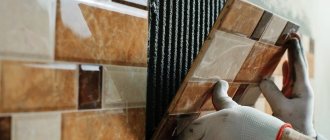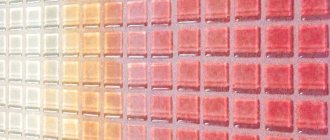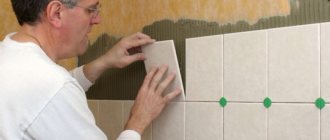LITOKOL is an Italian company founded more than 50 years ago. The products of this brand are successfully sold in more than 100 countries around the world, and in Russia they have established themselves as reliable, high-quality and affordable. The company's work is based on the production of dry construction mixtures, including tile adhesive.
The range of products in this area is huge. Adhesives are used for both interior and exterior finishing work. Let's consider what types of glue this company provides, their technical characteristics and purpose.
Types of glue
A wide selection of tile adhesives allows you to use a composition suitable for laying tiles of any type and size. The latest equipment, modern technologies, and a multi-stage quality system guarantee high performance when using LITOKOL products.
Types of adhesive compositions from the manufacturer:
- Cement-based tile adhesive. Excellent for laying ceramics, marble and mosaics on hard substrates (e.g. concrete).
- Dispersion tile adhesive. It is relevant for tiling surfaces such as concrete, cement, plaster and drywall with ceramic tiles.
- Two-component epoxy mixtures. Used when working with non-standard bases - plastic or wood.
LITOKOL adhesive mixture is distinguished by its resistance to climate change, temperature changes, and large-scale mechanical loads.
Specifications
Technical characteristics of Litokol K17 Fast
Characteristics of Litokol K80
Comb tooth size for K80 glue.
Characteristics and detailed descriptions of each type of glue are in the Litokol catalog (pdf).
Expense indicators
The adhesive consumption when laying tiles depends on:
- Properties of the facing material - size, texture and porosity of the tile.
- Methods of applying glue, thickness of the adhesive layer.
- Properties of the base - the presence of uneven surfaces that require filling.
Based on these parameters, it is necessary to calculate how much of the finished mixture will be needed per 1 square meter and, accordingly, for the entire coverage area. Considering that the range of Litocol adhesive mixtures is quite wide, let’s consider the average glue consumption by type of composition.
- Cement adhesive: with a thickness of 1 mm, on average about 1.3 kg is consumed per square meter of base
REFERENCE: some items are more expensive (for example, BETONKOL K9)
- Dispersion adhesive: a 1 mm thick layer per square meter area consumes approximately 2.5 kg of adhesive
- Reactive adhesive: 1 square meter of base requires an average of 2.5 kg of ready-made mixture
- Elastic tile adhesive: 1.3 kg per 1 square meter
Cost indicators are quite arbitrary and the final result depends on all the factors influencing it. To simplify the calculation of the consumption of the Litokol mixture, there are special calculators.
By specifying individual parameters, you can independently estimate the required volume of consumables.
Advantages and disadvantages
LITOKOL tile adhesive is sold in different regions of our country and is in demand everywhere. He is appreciated for:
- High quality, confirmed by Russian and European certificates.
- Long pot life, allowing you to prepare a large amount of solution in one go.
- Short final hardening time, reducing the time it takes to put objects into operation.
- Possibility of application to surfaces exposed to a wide temperature range.
- Ease of use.
- Strength and durability.
Among the many options for dry mixtures presented in the official catalog, there will certainly be a composition that best suits your requirements.
Tile adhesive "LITOKOL" occupies a leading position in many ratings. And this takes into account the fact that its main drawback - high cost - hinders the growth of popularity. Even wealthy buyers do not always consider it possible to purchase even a very high-quality product, paying 1.5 - 2 times more for it than for competitors' products.
Selecting glue for its intended purpose
Depending on where the covering is laid, the cladding material and the mixture that will fix this material are selected.
Despite the fact that many compositions are universal, you should first of all pay attention to special glue because of its improved parameters in one direction or another.
On the floor in the hallway, hallway or kitchen
You should not skimp on the quality and quantity of consumables when laying tiles in these areas of the apartment.
Considering that the cladding is constantly exposed to various negative factors (for example, humidity or high loads), you can use adhesives such as LITOFLEX K80, LITOFLOOR K66 or LITOELASTIC as a fixative for tiles.
For bathroom or swimming pool
The cladding of rooms with high humidity must meet the main requirement - good moisture resistance.
The liquid should not be absorbed and compliance with this rule directly depends on the solution on which the tiles are laid.
Products such as: LITOFLEX K80, LITOPLUS K55, LITOACRIL PLUS are perfect for a bathroom or swimming pool.
We also recommend watching - How to choose adhesive for bathroom tiles
For indoor wall cladding
The vertical cladding method is more difficult than the horizontal one. If floor tiles can be fixed with special crosses, then with walls things are a little different.
The advantage of the adhesive mixture for vertical coverings lies in its main quality - thixotropy, i.e. the tile should not slide during operation until it hardens.
Articles LITOKOL X11, LITOKOL K17, LITOKOL K17, LITOFLEX K80 and LITOFLOOR K66 are capable of complying with this clause.
For outdoors, verandas, external walls and basements
Street cladding is subject to strong temperature changes, and therefore possible deformation. Thanks to high achievements in the production of adhesive mixtures, the influence of climatic conditions can be minimized.
For laying tiles for exterior finishing, mixtures with the addition of latex are used, which increases the elasticity of the solution. Suitable names from the manufacturer Litokol: LITOKOL X11, LITOFLEX K80 and LITOFLEX K81.
Don't forget to also look - Frost-resistant adhesive for exterior use
Stairs and high traffic areas
Laying tiles on stairs, in elevator cabins, etc. is carried out using the following compounds: SUPERFLEX K77, LITOSTONE K98/K99. They are characterized by increased adhesion, strength and elasticity.
Often, they try to put stairs into operation as soon as possible. The rapid setting and drying of these solutions allows for loading within 24 hours after cladding.
| up to 10'000 rub. | from 10'000-100'000 rub. | from 100'000 rub. | |
| 25 kg. | 819 rub. | Flexible discount system | Flexible discount system |
Belongs to class C1T according to the classification of European Standards EN 12004 and GOST R 56387.
| Those. description |
| Characteristics LITOGRES K44 WHITE - cement adhesive (C) basic (1) thixotropic (T), belongs to class C1T according to the classification of European Standards EN 12004 and GOST R 56387. LITOGRES K44 WHITE - dry adhesive mixture based on white cement and sand , contains special synthetic resins and chemical additives that, after diluting with water, give the product elasticity and high adhesion to traditional building substrates. Highly effective cement-based adhesive for ceramic tiles and porcelain stoneware. The prepared adhesive solution has high water-holding capacity, high adhesive ability and thixotropy, is technologically advanced, and easy to use. When tiling vertical surfaces with LITOGRES K44 WHITE, there is no slipping of the tiles. LITOGRES K44 WHITE adhesive is moisture- and frost-resistant. Environmentally safe, does not contain asbestos fibers. Areas of use LITOGRES K44 WHITE is intended: • for cladding walls and floors; • for laying ceramic tiles (with water absorption >3%), brick-like ceramic tiles; • for laying clinker (with water absorption >3%) on indoor walls; • for laying porcelain stoneware; • for laying ceramic mosaics; • for spot gluing of insulating materials, glass wool, mineral wool, soundproofing panels, etc. • For interior and exterior work. LITOGRES K44 WHITE can be mixed with the latex additive LATEXKOL to improve the technical characteristics of the adhesive and its elasticity. Mix LITOGRES K44 WHITE with latex additive LATEXKOL in the following cases: • when cladding walls and partitions made of aerated concrete; • when cladding structures made of prefabricated or monolithic reinforced concrete; • when cladding partitions/structures made of gypsum plasterboard/gypsum plasterboard and other materials subject to deformation; • when facing balconies and terraces; • when facing concrete stairs; • when facing “warm” floors; • when facing with tiles/mosaics with water absorption <3% of non-absorbent mineral bases; • for laying porcelain tiles, including large-format and thin ones; • for laying large-format ceramic tiles; • for laying glass mosaics; • for laying natural stone, stable and resistant to moisture. When mixing LITOGRES K44 WHITE with the latex additive LATEXKOL instead of water, the adhesive meets the requirements of class C2 (improved cement adhesive) and class S2 (highly elastic adhesive) according to GOST R 56387. | Where can I buy? |
| Technical information |
| _ |
| Color | white |
| Bulk density of dry mixture | 1.3 ± 0.1 kg/l (1300 ± 100 kg/m³) |
| Proportions for preparing glue | 0.24-0.26 l of water per 1 kg LITOGRES K44 WHITE |
| Solution density | 1.4 ± 0.1 kg/l (1400 ± 100 kg/m³) |
| Consistency of the adhesive solution | elastic |
| Glue usage time | 4 hours |
| Application temperature | from +5 °С to +40 °С |
| Open time | 20 minutes |
| Adjustment time | 15 minutes |
| Adhesion after 28 days | ≥0.5 MPa |
| Adhesion after exposure to high temperatures | ≥0.5 MPa |
| Adhesion after exposure to aqueous media | ≥0.5 MPa |
| Adhesion after freeze/thaw cycles | ≥0.5 MPa |
| Vertical slip | 24 hours |
| Working load (final cure) | in 14 days |
| Grouting tile joints on walls/floors | 6-8 hours/24 hours after installation |
| Temperature resistance 28 days after installation | from -30 °C to +90 °C |
| Glue consumption | 2.5-5 kg/m² depending on tile size and surface condition |
| Optimal thickness of the adhesive layer | 1-5 mm |
| Package | Bags of 25 kg. Standard pallet: 54 bags, 1350 kg |
Reasons
Recommended bases: • walls and partitions made of brick or light small blocks; • cement-sand screeds, both fixed and “floating” (maturation period 28 days); • cement-sand plasters (maturing period 28 days); • gypsum panels, gypsum plasters, anhydrite bases after appropriate treatment with primers.
Surface preparation
The surface of the base should be fairly smooth and even, without wavy areas. The flatness of the base is checked in all directions with a two-meter metal strip resting on the underlying layer. The difference in levels should not exceed 3 mm. Level the base of floors with unevenness using LITOKOL CR30, LITOLIV BASIS mixtures, level the walls using plaster mixtures LITOGIPS, LITOPLAN, LITOPLAN RAPID, BETONKOL K7, BETONKOL K9. The bases on which the tile cladding is laid must be dry, level, strong, and have sufficient load-bearing capacity. Surfaces must first be cleaned of all kinds of contaminants, dust, traces of grease, oils, paints and any substances that weaken the adhesive ability of the glue. Anhydrite bases (with a residual moisture content of no more than 0.5% and gypsum bases (with a residual moisture content of no more than 1%) must be sanded and dust-free. Cement screeds, screeds and plasters must be aged for 28 days and be dry, with a residual moisture content of no more than 3%). the primer is completely dry.
Preparation of glue
Mix in a clean container 6-6.5 liters of clean water and 25 kg of dry adhesive mixture LITOGRES K44 WHITE. Pour the adhesive mixture into the water while continuously stirring with an electric drill with a special mixing attachment until a homogeneous plastic solution without lumps is obtained. Leave the resulting adhesive solution for 5-10 minutes to mature. After repeated mixing, the glue is ready for use.
Recommendations
• Cladding work should be carried out at base and ambient temperatures from +5 °C to +40 °C. • At lower ambient temperatures, increased air humidity and increased thickness of the adhesive layer, the curing time of the adhesive increases. • Excessively hot or windy weather may reduce the optimal open time of the adhesive before gluing the tiles, during which LITOGRES K44 WHITE is in an active state (ready for laying tiles). To avoid this, it is recommended to run a spatula over the surface of the adhesive, breaking the resulting film, and apply a small layer of adhesive to the back of each tile. • Do not add lime or cement to the product. • Do not add water to a solution that has already begun to set. • Do not soak the tiles before starting work. It is necessary to check that the back side of the tile is free of dust. • Do not use glue on plastic, rubber, wood, metal or resin-treated substrates. • LITOGRES K44 WHITE is not used on monolithic concrete structures poured on site, or on precast concrete structures whose dimensions are subject to strong fluctuations (shrinkage). In this case, you should use a two-component super-elastic adhesive composition LITOKOL X11 + 34% LATEXKOL-m. • For laying slabs of porcelain stoneware and ceramics, including large-format ones, it is recommended to use elastic adhesive mixtures SUPERFLEX K77, HYPERFLEX K100, HYPERFLEX K100 WHITE, LITOKOL X11 + LATEXKOL-m 1:1 with water, LITOKOL X11 + LATEXKOL-m, LITOELASTIC. • When laying new tiles on existing tiled surfaces using the “tile on tile” method, it is recommended to use LITOFLEX K80, SUPERFLEX K77, LITOKOL X11+LATEXKOL-m, HYPERFLEX K100. Existing ceramic tile surfaces must first be washed with water and caustic soda (1 kg of caustic soda per 9 liters of water) in order to obtain an immaculately clean, grease-free surface. • For laying glass mosaic use LITOGRES K44 WHITE + LATEXKOL. • In the case of laying glass mirror mosaic and mosaic with metallized coating, it is necessary to conduct a preliminary test for possible oxidation of the mirror/metalized coating of the mosaic. It is recommended to use LITOELASTIC adhesive for laying glass mirror mosaics and metallized mosaics. • The tool must be washed with water immediately after finishing work before the solution hardens, otherwise the tool must be cleaned mechanically. • Do not use the product for purposes not provided for in this technical description.
Preparing the base
Preparation of the base is an obligatory stage in facing work. Depending on how well the surface is prepared, the material is fixed most evenly and reliably. Main points of the preparatory stage:
- The cement screed must harden completely. On average, this takes about 28 days.
- A perfectly flat surface can be achieved using a self-leveling mixture.
IMPORTANT: differences cannot exceed 3 mm - The surface should not be contaminated: dust, grease, paint, etc. should be completely removed.
- The base must be primed for better adhesion and water retention. The primer must be completely dry before applying the adhesive.
Types of adhesives
A company from Italy, Litokol, currently produces three types of adhesives for tiles and porcelain stoneware.
The compositions differ in the type of base used:
- Cement. This Litokol glue is a dry powder composition. To prepare, the powder must be mixed with a certain amount of water. This type of mortar is used for laying tiles, artificial and real stone, mosaic and glass decorative items.
- Dispersive. It is a ready-made adhesive composition that is used for finishing using tile materials, plasterboard and other rough surfaces.
- Reactive. Special two-component adhesives “Litokol”, which must be pre-prepared before use in strict proportions. You need to mix the two components so that they begin to react with each other, resulting in a ready-to-use solution. Litokol reactive adhesive is used for gluing tile products to metal, wood, plastic and other non-standard surfaces.
Important! If you don’t want to overpay, for home use and gluing simple tiles, it is recommended to choose Litokol cement adhesives, which will do the job perfectly.
Applying glue
The finished adhesive solution must be applied to small areas so that it does not have time to harden. The exact shelf life of the finished composition is usually indicated on the packaging.
The drying speed of the glue is affected by: air temperature and humidity, moisture absorption of the surface, etc.
The mixture is applied with a notched trowel so that small ridges are formed. They increase adhesion to the tile, which is laid with the back side on the glue and pressed well.
ATTENTION: for some time (depending on the adhesive composition) it is possible to correct shortcomings in laying the tiles
When applying glue, it is worth remembering the need for expansion and tile joints. In the first day after installation, it is important to protect the tiles from mechanical influences, water ingress and other factors that can spoil the work.
During the week, styling needs protection from frost and direct sunlight.
Scope of application
In addition to all types of ceramic tiles, porcelain stoneware, Litokol can be used for laying facade clinker tiles, as well as natural and artificial stone. Thanks to this, K80 is considered a universal adhesive and is very popular in construction and repair. It can be applied to fixed bases and surfaces that may become deformed or move in the future.
Litokol adhesive is one of the few that allows the use of tile-on-tile technology. Most often, glue is used for cladding walls and floors, street steps and terraces, facades, and balconies. Litokol is also suitable for installing heated floors.
Here are the bases on which you can lay tiles using glue:
- brick, aerated concrete, concrete, including cellular concrete;
- various types of screeds and plasters that contain cement, including heated ones;
- plasterboard, gypsum fiber;
- gypsum bases, gypsum panels;
- old tiles;
- any base with a layer of waterproofing.
According to the manufacturer's recommendations, Litoflex cannot be used for laying porcelain tiles larger than 40*40 cm in size. It is also not used for finishing surfaces with large facade tiles - for this purpose it is better to buy other products from the Litokol brand (for example, X11). If the base is capable of sharp deformation, it is worth using LATEXKOL-m glue, which additionally contains latex to enhance elasticity. When it comes to finishing swimming pools, it is better to purchase a specialized product with enhanced moisture resistance, Litoplus K 55, and for large-format slabs - Superflex K 77.
Features of the material
The substance is available in the form of a dry mixture.
It is designed for fixing porcelain stoneware and ceramic tiles to any type of base. This could be concrete, heated floors, old tiles and other types of surfaces. The basis for making the mixture was cement, to which synthetic resins and special substances were added. A distinctive feature of the Litokol K 80 adhesive is the ability to use it in the manufacture of floor coverings for electric or water heating systems.
Mixtures for outdoor use
Decorative elements that are installed outdoors are subject to high loads, temperature changes, and atmospheric conditions. LITOKOL tile adhesive must be resistant to any environmental changes and heavy loads.
For outdoor work, the Litokol brand has several products:
- LITOKOL X11. Additionally, LATEXKOL must be added.
- Litokol K80.
- Litokol K81.
Latex-based additives make the glue more resistant to temperature changes and environmental factors.
Properties
The Italian company Litokol specializes in the development and production of adhesive compositions for mosaics, tiles, porcelain tiles, and natural stone tiles. During production, only the highest quality raw materials are used, which allows us to obtain glue with excellent technical characteristics. The Litokol brand produces several modifications of adhesive mixtures, each of which has its own qualities.
Speaking about the general properties of materials, the following points can be highlighted.
- Health safety. No harmful components are used in the production of Litokol adhesive mixtures, so the finished product is absolutely environmentally friendly.
- High level of adhesion to almost all types of substrates. The adhesive composition allows you to tile even such complex substrates as wooden and plastic surfaces.
- Excellent resistance to moisture and water. The Litokol line of materials also includes a separate type of mixture for tiling pools.
- Resistance to high and low temperatures, as well as to sudden changes.
- The mixture has good elasticity.
Information about the LITOKOL brand
The Litokol brand is an Italian company that appeared in 1968. The first plant specialized in the production of tile adhesives. The initial products of Litokol turned out to be of high quality. It ensured a reliable connection of the tiles to the work surfaces. Thanks to this, in the 70s, foreign branches of the Litokol company began to appear.
In the early 2000s, the manufacturer Litokol began to gain respect among finishers in the post-Soviet space. A large trade mission has opened in Kyiv. A large plant for the production of dry mixes, assembly adhesives, and other finishing materials from the Litokol company was built in the Moscow region.
Now Litokol products are known in 90 countries around the world. Maximum automation of production allows us to achieve high quality and productivity indicators.
Among the names of the Litokol company, the following positions stand out:
- Tile adhesives.
- Epoxy adhesive compositions consisting of a base and a hardener.
- Compositions for leveling screeds.
- Primers for different surfaces.
- Self-leveling fillers for floor coverings.
- Dispersion mixtures that are applied before laying tiles on different surfaces.
- Waterproofing, antiseptic primers Litokol.
- Compositions for waterproofing floors, walls, water tanks.
- Additional components for adhesive masses to improve their characteristics.
- Putty, plaster mixtures.
- Special removers and degreasers for cleaning old decorative compounds.
Thus, products from Litokol can be used from laying walls to finishing work when decorating premises.
Recommendations
Before using such expensive grouting materials as Litokol, you must study the included instructions. Additional recommendations that are often given by experienced craftsmen are as follows:
- Preliminary selection of colors. If non-white grout is used, it is important to select a shade in advance that matches the color of the facing material. Here it is recommended to carry out a trial application of the grout.
- Compliance with work deadlines. Rapid drying of the prepared mixture can lead to its inappropriate consumption.
- Cleaning the tile surface after applying grout. It is advisable to use special cleaning solutions produced by Litokol.
Following such recommendations helps achieve better results with less time and expensive materials.

